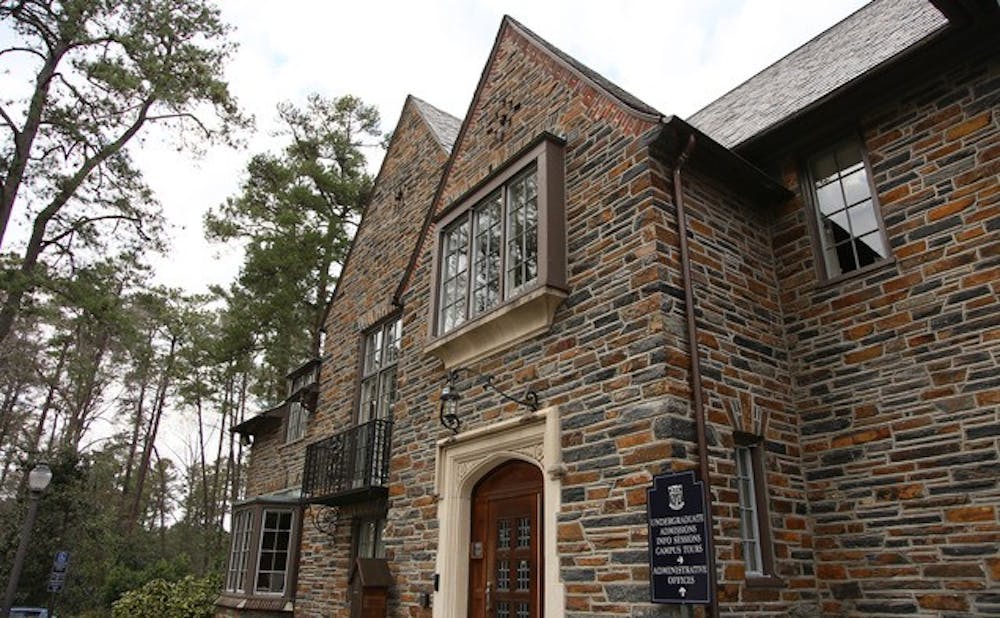Duke’s Class of 2019 may be the largest in the University’s history.
Due largely to an exceptionally high regular decision yield, the University will enroll between 1,745 and 1,755 freshmen this Fall—overshooting its target of 1,705, Dean of Undergraduate Admissions Christoph Guttentag wrote in an email.
He anticipated that current yield—including early and regular decision applicants—will be between 49 and 50 percent, up from last year's yield of 47.7 percent, which was Duke's highest since 1979.
The unusual size of the Class of 2019—only twice in Duke’s history, in 1990 and 2010, has the University enrolled between 1,745 and 1,750 students—meant that “almost no one” was admitted from the waiting list this year, Guttentag explained.
“Normally we like to admit about 50 to 70 students a year from the waiting list. It was a fraction of that this year,” he wrote.
Predicting the decisions of prospective students always comes with uncertainty, Guttentag noted—explaining that although it is too early to pinpoint which specific factors contributed to Duke's high yield, it was “predominately a Trinity College phenomenon.”
This year, 2,650 of more than 28,000 regular decision applicants were accepted—50 fewer students than last year, 260 fewer than two years ago and more than 500 fewer than three years ago, Guttentag wrote. The 9.4 percent acceptance rate for the Class of 2019 marked the third consecutive year that the regular decision rate was less than 10 percent.
A record 48 percent of the class was filled by the 815 students admitted through the early decision process—up from 47 percent of the Class of 2018. Guttentag wrote that this is a figure unlikely to change dramatically in future years.
“I’m pretty comfortable with the number of students we’re admitting in December,” he wrote. “That may change in the coming years slightly, depending on the number and quality of early decision applicants, but overall I think what we’ve done in the last couple of years—admitting between 45 and 48 percent of the class—has served Duke well.”
Historically, Duke's yield falls in the middle of the pack compared to its peer institutions. On the higher end, Harvard University, University of Pennsylvania and Yale University reported yields of 81 percent, 63.2 percent and 66.9 percent respectively in Fall 2013, according to U.S. News & World Report. Cornell University, Dartmouth College and Vanderbilt University reported yields of 51.8 percent, 47.8 percent and 40.7 percent, respectively.
Guttentag said encouraging students to visit campus in April—whether for Blue Devil Days, Black Student Alliance Invitational, Latino Student Recruitment Weekend or other programs—provides the greatest difference in helping students decide to come to Duke.
He noted that admissions also helps connect prospective students with Duke faculty and current undergraduates, who he said are "best in helping students understand all of the opportunities available to them at [Duke]."
Despite the large class size, all members of the Class of 2019 will be comfortably housed on East Campus, wrote MJ Williams, director of housing assignments and planning for Housing, Dining and Residence Life, in an email.
She explained that when fewer students are enrolled, student rooms may be converted into studies or HDRL staff offices.
Get The Chronicle straight to your inbox
Sign up for our weekly newsletter. Cancel at any time.

